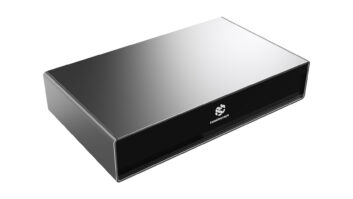Dave Pedigo is CEDIA’ Sr. Director of Technology.
Based on some recent events, the CEDIA technology council decided to conduct a small survey of internal CEDIA staff members.
This is not considered a scientific study but instead a case study that should correlate relatively well to the general public. The survey took place on March 27 at CEDIA HQ.
There were 25 participants who chose to participate in the survey. They were asked to look at two identical displays and answer five questions. The displays were showing the movie “Twilight” playing in 720p via an MP4 download and 1080p on Blu-ray. Both displays were connected using high-quality 5-meter HDMI cables. The participants were not informed which display was Blu-ray and vice-versa as the display on the left was marked “A” and the display on the right was marked “B.”
Again, this is not considered to be a highly scientific study, but it should be pretty accurate. The survey was given to 21 women and 4 men. The displays were non-calibrated 40-inch LCDs on movie mode with identical movie mode settings. The lights were dimmed in the front of the room towards the displays and on in the back. The results were as follows:
Question One: Which picture looks better, A or B?
Question Two: Which Picture is Blu-ray?
On Question Two, 75 percent of respondents picked Blu-ray as having the superior picture quality. This shows some significant inroads in regards to branding Blu-ray and picture quality have been made. However, with 87 percent of respondents blindly choosing Blu-ray as having the better picture and only 75 percent associating Blu-ray with the best picture quality, the advantages of uncompressed 1080p formats is not universally recognized by the average person.
Question Three: On a scale of 1 to 10, what is your confidence level that your pick is correct?
As suspected, moving from a standard-definition 480i image to a 720p image decreased the confidence level ofthose choosing which picture looked better. In this instance, the confidence level of the participants was 67.8 percent, down from 81% in the first survey.
Question Four: Do you buy movies because of deleted scenes and special features?
Question Five: Are you willing to purchase and download a movie on iTunes if it does not have deleted scenes and special features?
Yes, I would 65%
No, I would not 35%
Conclusion: The conclusion of the survey shows there is a measurable difference in image quality perceptible between uncompressed 1080p content on Blu-ray and compressed 720p iTunes. However, these differences are less noticeable than the comparing 480i to 1080p, as is expected. It should be noted that the accuracy and confidence moved down between the two surveys.
It should also be noted that, contrary to what one might expect, the lack of special features and deleted scenes does not seem to be a deterrent to most, as 69 percent of respondents stated they would purchase and download movie without those features.
CEDIA members who are concerned about the intermediary status of Blu-ray as a device should not worry too much. Although iTunes ease of use and portability are attractive, its lack of uncompressed 1080p content will serve as a deterrent against those with video purists as clients.
Footnote: Blu-Ray Disc is a registered trademark of the Blu-ray













